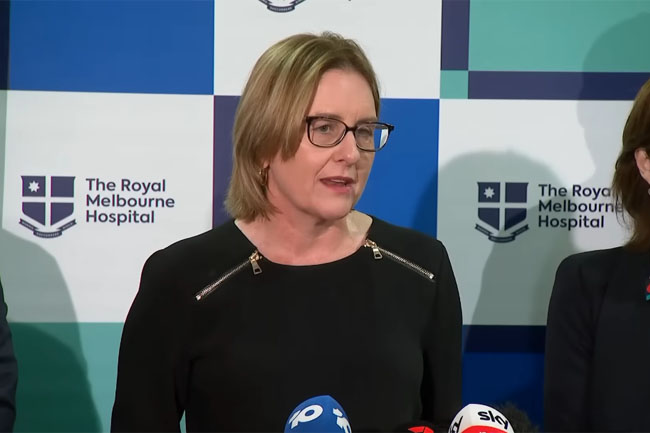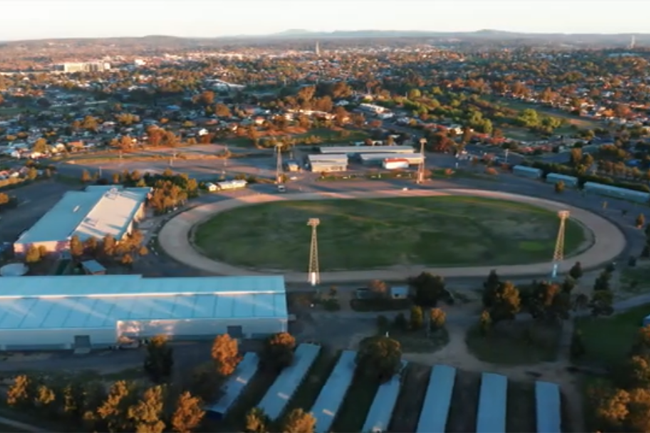The release of the Australian banking regulator’s annual points of presence data this week will be an integrity test for both its chairman Wayne Byres and Federal Treasurer Jim Chalmers.
The Australian Prudential Regulation Authority (APRA) and Treasury are both in possession of a list of 149 bank sites that do not meet the legal definition of a branch under federal legislation.
Most of them have been falsely listed in government data by their Australian and foreign owners for years.
Others, such as two National Australia Bank regional sites in Geelong, have been downgraded to a point where they no longer meet the legal definition of a bank branch in the past 12 months.
Both Mr Byres and Dr Chalmers have given commitments that bank sites that do not provide cash services have no place in the official government branch lists; Mr Byres firstly in April during Senate Estimates and Dr Chalmers in July in a written response to questions prepared on his behalf by the Treasury Department.
Mr Byres was questioned about cashless banks and other mistakes in the regulator’s “authorised deposit-taking points of presence” (ADIPOP) database on 6 April by Senator Malcolm Roberts.
Senator Roberts asked:
“Will you ensure all branches that do not accept and issue cash are downgraded to other (face-to-face) rather than continue to show as a bank branch.”
Mr Byres replied:
“I think that's where they should be reported already. If they are not, we would need to make sure that they were.”
Dr Chalmers, also responding to criticism that APRA was publishing inaccurate information and that the ADIPOP database was enabling the banks to conceal their branch footprints, confirmed this on July 28.
First assistant secretary James Kelly, on behalf of Dr Chalmers, stated
The National Australia Bank’s (NAB) proposed future ‘cashless bank branches’ would not meet the reporting definition of a branch for POP (points of presence).
Should NAB go ahead with its proposal, APRA expects these branches would be reclassified or removed from the following year’s reporting.
The list of banks that appear to have been falsely reported as providing face-to-face cash service includes eight ANZ, ten NAB, two Westpac, a Commonwealth and 122 Rabobank sites.
Another 217 Bendigo and Adelaide Bank/Rural Bank sites that had been listed in the wrong classification since the ADIPOP statistics were first published in 2001 were quietly corrected before the October 2021 data release after the errors were exposed by The Regional in May of that year.
The Regional reported:
Cash management is the biggest issue a town faces when it loses its last bank.
Unfortunately, the APRA database also can’t be relied on for an accurate picture of regional Australians’ access to cash services, which is a critical factor recognised under a “branch closure protocol” overseen by the Australian Bankers Association.
This measure was one of the few protections along with the APRA database that the Hawker Committee’s investigation into regional banking in 1999 was able to put in place to ensure customers would not be left without some form of over-the-counter service that allowed access to cash deposit and withdrawal facilities.
As such, to be classified as a bank “branch” under federal legislation, a banking outlet must accept cash and other deposits (including business deposits) and provide change.
Despite never having met this requirement, however, Rural Bank (under Bendigo and Adelaide Bank since 2019) and Rabobank have been counted as full-service retail banks in more than 340 regional sites across regional Australia since being listed in the APRA database, which in Rural Bank’s case was nearly 20 years ago.
Under the Financial Sector (Collection of Data) Act 2001, banks are required by law to accurately report to APRA which service channel category their sites fall under according to legislated definitions.
They are liable for up to an $11,000 fine for every instance of every year they have failed to comply with the legislation.
Rabobank sites have been incorrectly listed since 2008, while some of the ANZ locations can be tracked back to 2012.
An APRA spokesperson has confirmed that no action had been taken against Bendigo and Adelaide Bank for misrepresenting its branch network:
There has not been any formal enforcement action in relation to this matter.
In general terms, APRA will have regard to a range of factors in considering whether to take enforcement action, including factors such as the magnitude of the reporting error and whether an entity is cooperative and prompt in remedying any identified issues.
The errors published by the Bendigo and Adelaide Bank and subsequent correction represented a 40 per cent change in the bank’s regional branch network.
Despite the size of this revision, which was also made to historic data dating back to when the Bendigo and Adelaide Bank fully absorbed the Rural Bank into its network in 2018, the changes were not disclosed by APRA.
The APRA spokesperson would not confirm if the 149 sites provided to APRA and Dr Chalmers’ office would appear in their correct service channel categories in the next annual publication of the data, which is due out on Wednesday19 October.
She said only that if the corrections were made, the revisions would be noted in the document.
It has been 16 months since the long-standing errors in the APRA points of presence database were exposed and the banking regulator admitted that it did not check the information provided to it by the banks before publishing.
It has been six months since Mr Byres was confronted about these errors in Parliament and gave an undertaking to make sure banking institutions’ service channels were correctly classified.
It has been three months since Dr Chalmers confirmed in writing that banks must provide face-to-face cash services for their sites to be considered a bank “branch” under government legislation.
The contents of this year’s points of presence data will speak to the character of both these individuals and the current government.
It could go either way.
Dale Webster is an inaugural recipient of a Walkley Foundation Grant for Freelance Journalism on Regional Australia. She publishes independently through her own title, The Regional. You can follow Dale on Twitter @TheRegional_au.
Related Articles
- Your chance to put the blowtorch on the belly of bad bank behaviour
- Banking sector chaos sparks call for government intervention
- Regulator rights errors but bank data doesn't add up
- Big Four banks casting a dangerous shadow
- Odds on regional banks will be gone despite inquiry
 This work is licensed under a Creative Commons Attribution-NonCommercial-NoDerivs 3.0 Australia License
This work is licensed under a Creative Commons Attribution-NonCommercial-NoDerivs 3.0 Australia License
Support independent journalism Subscribe to IA.
















